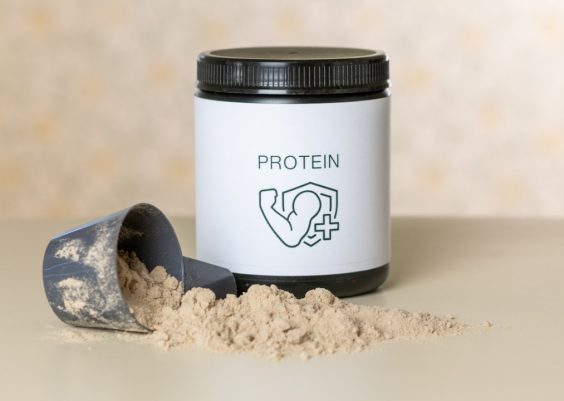In a world where time equals money, professionals are constantly seeking efficient ways to maximize their outreach and conversion strategies. One of the best ways to ensure effectiveness when approaching a new lead is learning how to quickly and accurately profile a business prospect. With the right tools, mindset, and process, it’s entirely possible to create a comprehensive profile of a potential client in just 30 minutes.
Why Business Prospect Profiling Matters
Prospect profiling is more than a standard research task—it’s the blueprint for successful engagement. By understanding a company’s needs, goals, and challenges, businesses can tailor their sales or marketing approach to improve response and conversion rates dramatically.
Whether you’re a salesperson preparing for outreach, a business analyst considering partnerships, or a marketer creating segmented campaigns, prospect profiling ensures that your message is relevant and timely.
The 30-Minute Prospect Profiling Framework
The key to profiling quickly lies in structured research steps. Here’s a time-efficient system to follow:
Minute 1–5: Identify the Business Basics
Start with foundational information about the company. Your goal is to gather:
- Company name and website
- Industry and product/service offerings
- Company size (employees, revenue tier)
- Physical location or operational regions
Sources like Crunchbase, LinkedIn, and the company’s website are excellent starting points.
Minute 6–10: Assess Online Presence and Branding
Next, evaluate how the business presents itself online. This helps determine brand maturity, digital footprint, and content tone. Check:
- Social media activity (LinkedIn, Twitter, Facebook)
- Blog or news section on the website
- Marketing campaigns or public events
This quick branding audit can reveal whether they’re investing in growth, product launches, or audience engagement.

Minute 11–15: Analyze Market Position and Competitors
Understanding how your prospect sits within their market is crucial. Ask:
- Who are their top 3 competitors?
- What markets or demographics do they serve?
- Is their product or service unique or commoditized?
Use industry blogs, tech incubator listings, and comparison tools like G2, Capterra, or Similarweb for competitor insights.
Minute 16–22: Discover Key Decision Makers
No profile is complete without identifying the people who matter. During this phase, aim to know:
- Company executives (CEO, Marketing Director, CTO, etc.)
- Department heads relevant to your outreach
- Recent new hires in strategic roles
LinkedIn is your go-to platform here, but sales tools like Hunter.io or RocketReach can also help you dig deeper. Add personalized notes if they’ve posted on recent industry themes or spoken at public events.
Minute 23–27: Gauge Growth Trajectory and Momentum
Evaluate whether the business is in growth mode, stagnant, or contracting. Look for signs like:
- Recent fundraising rounds or press releases
- Job listings (especially in Sales, Engineering, or Marketing)
- New product launches or acquisitions

Public information from presswire services and platforms like AngelList can give you a snapshot of their momentum.
Minute 28–30: Synthesize and Score the Prospect
With all data in hand, perform a brief analysis and assign an internal lead score. Your profile should now have enough detail to answer:
- Is this business a good fit for your product or service?
- What challenges might they be facing?
- How likely are they to engage or convert?
Many businesses use CRM platforms like Salesforce or HubSpot to track these details, but even a Google Sheet template can be effective if customized.
Tips to Make the Process Faster
For professionals who need to profile dozens of prospects weekly, time optimization is key. Here are some tactics that reduce research time without sacrificing quality:
- Templates: Use a consistent format for each profile to avoid duplicating effort.
- Automation Tools: Platforms like Clearbit or ZoomInfo can gather contact and firmographic data instantly.
- Saved Searches: Use Boolean search strings on Google and LinkedIn to rapidly find relevant information.
- Browser Extensions: Tools like Skrapp, Lusha, and Similarweb plug-ins help while you browse.
When to Deepen the Profile
While the 30-minute profile is sufficient for preliminary outreach or qualification, deeper research is necessary for high-ticket sales or strategic partnerships. In such cases, additional steps may include:
- Buying committee mapping
- In-depth financial analysis
- Executive interviews or LinkedIn InMail interactions
Frequently Asked Questions (FAQ)
-
Q: What tools are best for business prospect profiling?
A: LinkedIn, Crunchbase, Clearbit, Google, AngelList, and Similarweb are commonly used. CRM integrations with LinkedIn Sales Navigator or ZoomInfo also help streamline data gathering. -
Q: Can a 30-minute profile be accurate enough for cold outreach?
A: Absolutely. While it may not be exhaustive, a 30-minute profile often includes enough targeted insight to personalize cold emails or initiate calls effectively. -
Q: How often should I update prospect profiles?
A: Ideally, every 3–6 months or before each outreach attempt. Company dynamics—like funding, leadership changes, or service pivots—can change quickly. -
Q: Is it ethical to gather all this information online?
A: Yes, if it’s sourced from publicly available platforms or voluntarily shared data such as social media or company press releases. However, always respect privacy regulations like GDPR or CCPA. -
Q: Should I include financial data in the profile?
A: If available and relevant, yes. Understanding revenue, profit margins, or valuation provides insights into purchasing power or strategic intent.
In today’s hypercompetitive business landscape, speed and personalization go hand-in-hand. Learning to profile a business prospect thoroughly in under 30 minutes is a vital skill for any professional focused on business growth, partnership development, or sales conversion. With practice and the right tools, this process becomes second nature—enabling smarter, faster decision-making at every level.




